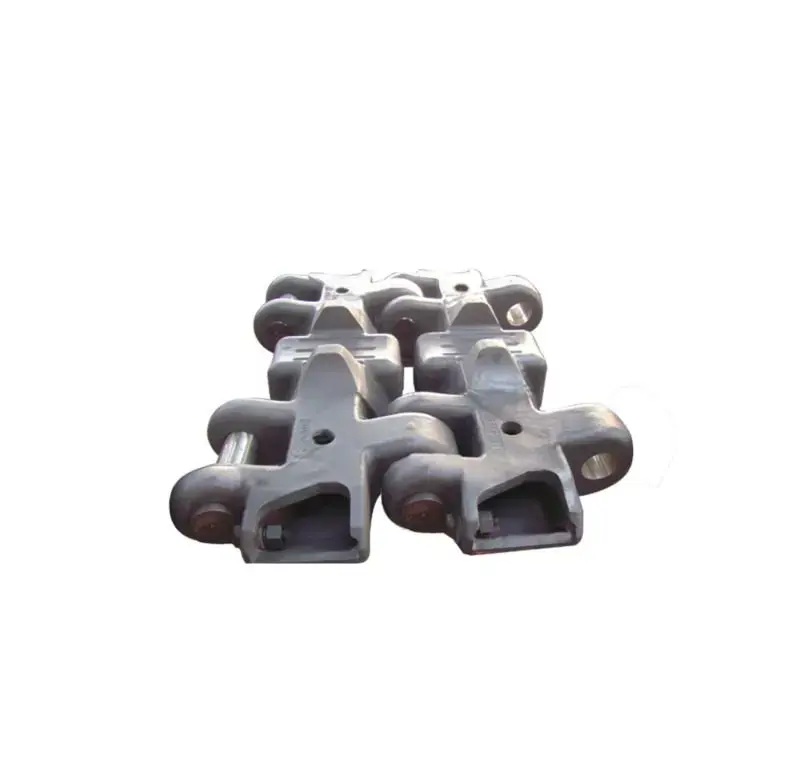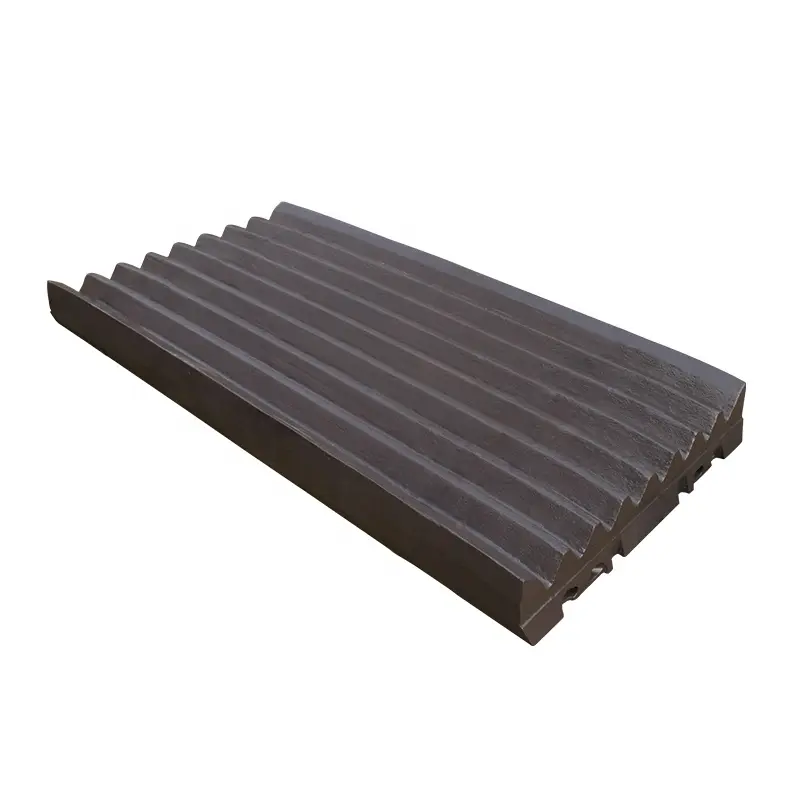You know the track plate
Track plate, one of the chassis parts of construction machinery, is a wearing part of the construction machinery used. Commonly used in excavators, bulldozers, crawler cranes, pavers and other construction machinery.
The structure of the track plate: the commonly used track plate is divided according to the ground shape, there are three kinds of single reinforcement, three reinforcement and flat bottom, and individual triangular track plate is also used. Single-rib track plate is mainly used for bulldozers and tractors, because this type of mechanical work requires that the track plate has a high traction capacity. However, it is rarely used in excavators, and this track plate is only used when the excavator is equipped with a drill frame or requires a large horizontal thrust. Higher traction is required during the turn, so the higher shoestrings (i.e. shoestrings) will squeeze the soil (or land) between the shoestrings, thus affecting the maneuverability of the excavator.
Steel track plate can be divided into: excavator plate, bulldozer plate, these two are the most commonly used, with steel as raw materials. Then there is the wetland board used by the bulldozer, commonly known as the "triangle board", which is a cast plate. Another kind of casting plate is used on the crawler crane, the weight of this plate is as little as tens of kilograms, and as much as hundreds of kilograms.
Use of track plate: Most excavators use three-bar track plate, and a few use flat-bottom track plate. When designing the three-bar track plate, the specific ground pressure and the meshing soil capacity between the shoe and the ground should be obtained first to ensure the necessary adhesion. Secondly, the track plate should have high bending strength and wear resistance. The three-rib track plate generally has two mud cleaning holes. When the track plate rotates around the drive wheel, the mud on the chain rail joint can be automatically removed with the help of the gear teeth, so the mud cleaning hole should be located between the two screw holes that fix the track plate on the chain rail joint.
In order to protect the surface of the ground and reduce the resistance to turning, it is more appropriate to use long tracks and flat tracks for the use of track walking devices in marshlands or farmland. In order to ensure that the track chain at any position (including grounding, rotation around the drive wheel and guide wheel and upper suspension position) between the two adjacent track plates will not be caught in the stone and the resulting excessive stress, the pitch of the track plate is required to be adjusted accurately, and the appropriate shape of the lap lip should be designed. The function of the lap lip is to hold the track plates close to each other, forming a band that meets the end. The track plate shall be mounted successively in the same direction. The smaller the pitch of the track, the smaller the rise of the track chain when it runs between the drive wheel and the guide wheel. In this way, the running uniformity is good, the wear of the track chain is low, and the driving efficiency is high when walking. However, the minimum pitch value should be determined according to the weight of the machine and the number of rows of track chains.
The hole distance on the two rows of chain rails where the track plate is installed should generally be larger to replace the track plate with a different ground pressure. The walking device used in marshes requires a very wide track plate and rail surface, and such an ultra-wide track plate sometimes has high bending stress. For example, when the excavator works on the ground mixed with residual tree roots, because the major part of the machine falls on a track plate supported by the tree roots, the track plate produces very high bending stress, which affects the life of the track plate. In order to prevent the damage and bending of the track plate, it is necessary to improve the section coefficient and bending strength. To improve the section coefficient, it is necessary to increase the height of the reinforcement, but this will significantly increase the turning resistance and affect the maneuverability of the excavator. Therefore, steel rolled hollow track plates should be used for walking devices with a width of more than 700 mm for use in marshes. Most of the two ends of the track plate used in the swamp are made of slope angles, so that it is easy to protect the ground surface, reduce the turning resistance and subsidence, and when walking on the hard ground, the shortening of the supporting lever can reduce the bending moment of the edge load.
Excavators with a track plate width of more than 800 mm are mainly used in marshes and are not suitable for general occasions. Excavators with widened and lengthened crawler walking devices are especially suitable for pipeline engineering.

The wear law of the track plate: when working normally, the track pin slowly rotates backward in the pin hole, the two wear evenly, the pin hole gradually becomes larger, and the pin gradually becomes thinner. If the operation is improper, such as high-speed turning, sudden start, or into mud, weeds, etc. so that the dowel plug is dead, it will cause the track plate on both sides of the pressure is too heavy to bend down, the dowel deformation and bending, can not be turned in the pin hole, the pin and the pin hole become sliding friction, and the friction part is limited to a small part of the contact surface, the pin gradually ground into a curved shape, the pin hole also becomes oval. The increase of the pin hole also causes the track pitch to lengthen (the pitch is the center distance of the holes at both ends of the track plate), so the track plate and the drive wheel chew each other, the track plate is worn through, and the drive wheel teeth are knife-like. According to the measurement, when the pitch is changed from 174 mm to 184 mm, the opening width of the drive wheel teeth is changed from 87 mm to 97 mm, and the normal rolling engagement is completely destroyed.
Because the pitch of the track plate is elongated, it also causes the runout of the support wheel during walking, which accelerates the wear of the track plate. When the runway subsidence is greater than 4 mm, it should be repaired.
The wear of the guide part of the track plate is mainly caused by the track deflection, the serious deformation of the track plate, and the axial shaking of the support wheel and the guide wheel. The common scrapped track plate is seriously worn or worn through at the part that engages with the drive wheel.




